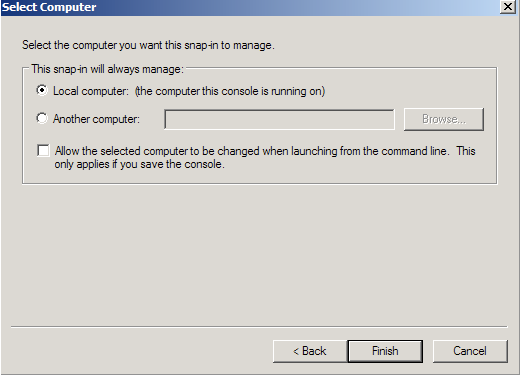Microsoft Management Console (MMC) is the management console that is used to configure, manipulate, create, and fix services on a windows system in the back end that you probably wont be able to do with any front end application. It is used heavily to troubleshoot matters related to SSL certificates on Windows systems.
Open up a MMC snap in by performing the instructions below.
Step 1: Create an MMC Snap-in for Managing Certificates on a Windows server system:
- Start > run > MMC.
- Go into the Console Tab > File > Add/Remove Snap-in.
- Click on Add > Click on Certificates and click on Add.
- Choose Computer Account > Next.
Note: When troubleshooting browser certificates such as client certificates, email signing certificates, CodeSigning, etc.. you will choose My user account instead and continue with the certificate snap in wizard. - Choose Local Computer > Finish.
- Close the Add Standalone Snap-in window.
- Click on OK at the Add/Remove Snap-in window.
- You will be brought back into the management console where you will see your snap in where you can expand and right click the various folders or certificate so see options that are available to you.
You have successfully created a MMC snap-in to manage certificates on your server system.
If this article is helpful, please share it.




